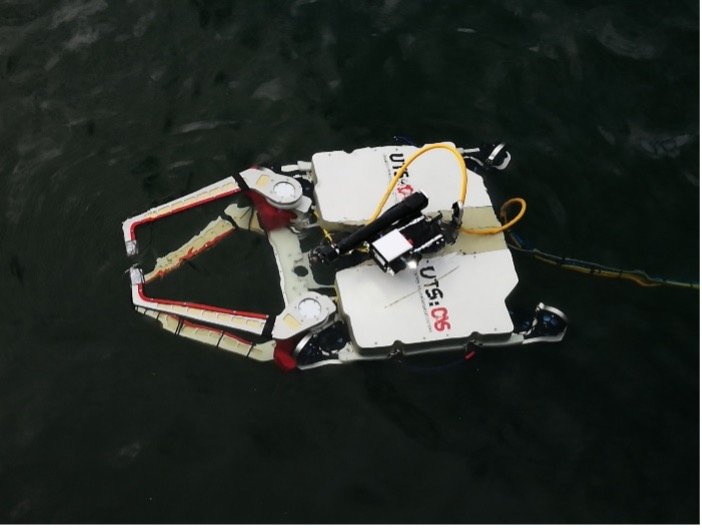
Research
Pilot Studies
The AI and human-machine collaboration is a world-first initiative that pools the diverse expertise of top researchers from across Australia and the world. Their combined knowledge of artificial intelligence, telecommunications, engineering, the internet of things, robotics, social sciences, and more makes them uniquely placed to deliver insights, advances, and outcomes from which society in general will benefit.
National Facility for Human-Robot Interaction Research
Improving the way people and technology work together
When it comes to understanding the subtle and unique ways in which people and robots interact, there is more than engineering and robotics: there is psychology and interactive media arts. The National Facility for Human-Robot Interaction (HRI) Research is equipped with more than 200 hidden sensors that stream and record the minutest of movements and sounds, making it possible to study the way people use, behave, and react to technology (not to mention how robots learn) in striking detail. These insights would make it possible to improve the lives of people with disability who rely on robotic technology. It is the only facility in the world capable of delivering such highly detailed information.
This project is funded by an ARC-LIEF grant.
Participants:
Professor Mari Velonaki
Professor Dikai Liu
Dr Wafa Johal
Neuroadaptation
The next generation of brain-computer interfaces, communications, and AI will allow robots of the future to work closer than ever with people. Mechanical arms and other tools, for instance, will be guided by the people using them to move freely, fluidly, and intuitively; responding in lock-step with brainwaves from their human operators. Developing a system that can quickly translate all the data from a person’s mind into corresponding machine actions that are natural, accurate, and timely is the key to giving robots that human touch. It will feel as though human and machine are moving as one.
Energy consumption
Achieving net-zero emissions with our energy use will be closer than ever, thanks to intelligent machines. Present day smart grids provide suppliers and consumers with very basic options to monitor and control their electricity use. But when working with cyber-physical systems, people will be able to seamlessly incorporate daily changes in demand in the energy market, new regulations, and more into their daily energy consumption habits.
Intelligent Robots for Workplaces
Intelligent robots of the future will understand the needs of its human co-workers. This will make it possible for workplaces to combine the superior perception and decision-making abilities of humans with the power, speed, and accuracy of robots. A human-robot collaborative operation that can leverage these advantages would fundamentally change the way business is done.
Publications
AI theories and algorithms
Lin, A., Lu, J., Xuan, J., Zhu, F., & Zhang, G. (2020). A causal Dirichlet mixture model for causal inference from observational data. ACM Transactions on Intelligent Systems and Technology, 11(3), 1-29.
Lu, J., Zuo, H., & Zhang, G. (2019). Fuzzy multiple-source transfer learning. IEEE Transactions on Fuzzy Systems, 28(12), 3418-3431.
Wang, Q., Liu, D., Carmichael, M. G., Aldini, S., & Lin, C. T. (2022). Computational model of robot trust in human co-worker for physical human-robot collaboration. IEEE Robotics and Automation Letters, 7(2), 3146-3153.
Molaei, S., Bousejin, N. G., Zare, H., Jalili, M., & Pan, S. (2021). Learning graph representations with maximal cliques. IEEE Transactions on Neural Networks and Learning Systems. 10.1109/TNNLS.2021.3104901
Wireless networks, 6G, and communications
She, C., Sun, C., Gu, Z., Li, Y., Yang, C., Poor, H. V., & Vucetic, B. (2021). A tutorial on ultrareliable and low-latency communications in 6G: Integrating domain knowledge into deep learning. Proceedings of the IEEE, 109(3), 204-246.
She, C., Dong, R., Gu, Z., Hou, Z., Li, Y., Hardjawana, W., ... & Vucetic, B. (2020). Deep learning for ultra-reliable and low-latency communications in 6G networks. IEEE Network, 34(5), 219-225.
She, C., Duan, Y., Zhao, G., Quek, T. Q., Li, Y., & Vucetic, B. (2019). Cross-layer design for mission-critical IoT in mobile edge computing systems. IEEE Internet of Things Journal, 6(6), 9360-9374.
Infrastructures, networks, and systems
Gubbi, J., Buyya, R., Marusic, S., & Palaniswami, M. (2013). Internet of Things (IoT): A vision, architectural elements, and future directions. Future Generation Computer Systems, 29(7), 1645-1660.
Hamedmoghadam, H., Jalili, M., Vu, H. L., & Stone, L. (2021). Percolation of heterogeneous flows uncovers the bottlenecks of infrastructure networks. Nature Communications, 12(1), 1-10.
Lian, Z., Shi, P., & Lim, C. C. (2021). Dynamic hybrid-triggered-based fuzzy control for nonlinear networks under multiple cyber-attacks. IEEE Transactions on Fuzzy Systems. 10.1109/TFUZZ.2021.3134745
Zheng, S., Shi, P., & Zhang, H. (2022). Semi-global periodic event-triggered output regulation for nonlinear multi-agent systems. IEEE Transactions on Automatic Control. 10.1109/TAC.2022.3142123


